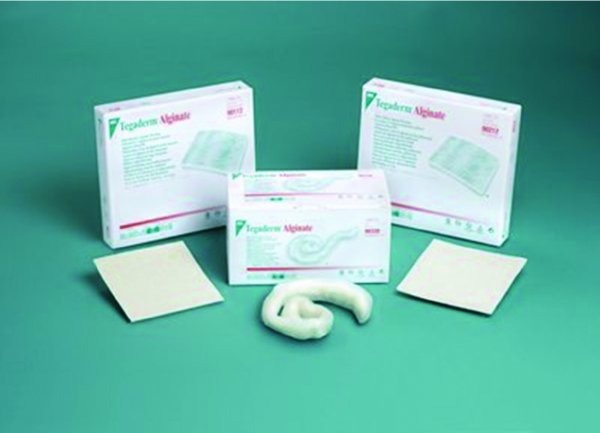
3M™ Health Care
How Supplied
High integrity
| Pad | 4″ × 4″ | A6196 |
| Rope | 1″ × 12″ | A6199 |
High gelling
| Pad | 4″ × 4″ | A6196 |
| Rope | 12″ | A6199 |

3M™ Health Care
How Supplied
High integrity
| Pad | 4″ × 4″ | A6196 |
| Rope | 1″ × 12″ | A6199 |
High gelling
| Pad | 4″ × 4″ | A6196 |
| Rope | 12″ | A6199 |
3M™ Tegaderm™ Alginate Dressings are gel-forming, absorbent, versatile alginates, which provide for optimum wound healing. 3M™ Tegaderm™ High Integrity Dressing offers high integrity for quick dressing changes. 3M™ Tegaderm™ High Gelling Alginate Dressing offers high-gelling properties, which may be preferable for gentle removal of the dressing from fragile tissue.
3M™ Tegaderm™ Alginate Dressings are primary dressings intended for use on partial and full thickness wounds with moderate to heavy exudate. The dressings may be used for pressure injuries, arterial ulcers, venous ulcers, diabetic ulcers, superficial wounds such as cuts and abrasions, donor sites, postoperative wounds, trauma wounds, and other dermal lesions. They are also intended to help control minor bleeding. Use of any dressing, including 3M™ Tegaderm™ Alginate dressings, should be part of a well-defined protocol for dermal wound management.
Contraindicated for surgical implantation.
Contraindicated for third-degree burns.
Pad
Moisten the wound site with normal saline solution or other sterile irrigation solution, according to facility policy. Dry the periwound skin.
If the patient's skin is fragile or wound drainage may contact the periwound skin, apply barrier film around the wound.
Select the appropriate dressing size for the wound. 3M™ Tegaderm™ High Integrity and High Gelling Alginate dressings may be trimmed to fit the wound site.
Apply the dressing to the wound bed with minimal overlap to the periwound skin.
Loosely pack deep wounds.
Cover the dressing with an appropriate secondary dressing.
Rope
Fluff the rope dressing as needed for light packing.
Make sure the dressing lightly contacts all wound surfaces, including areas of undermining.
Loosely pack deep wounds by fluffing and layering the dressing back and forth into the wound.
Cover the rope dressing with an appropriate secondary dressing.
Extend the cover dressing at least 1″ (2.5 cm) beyond the edge of the wound.